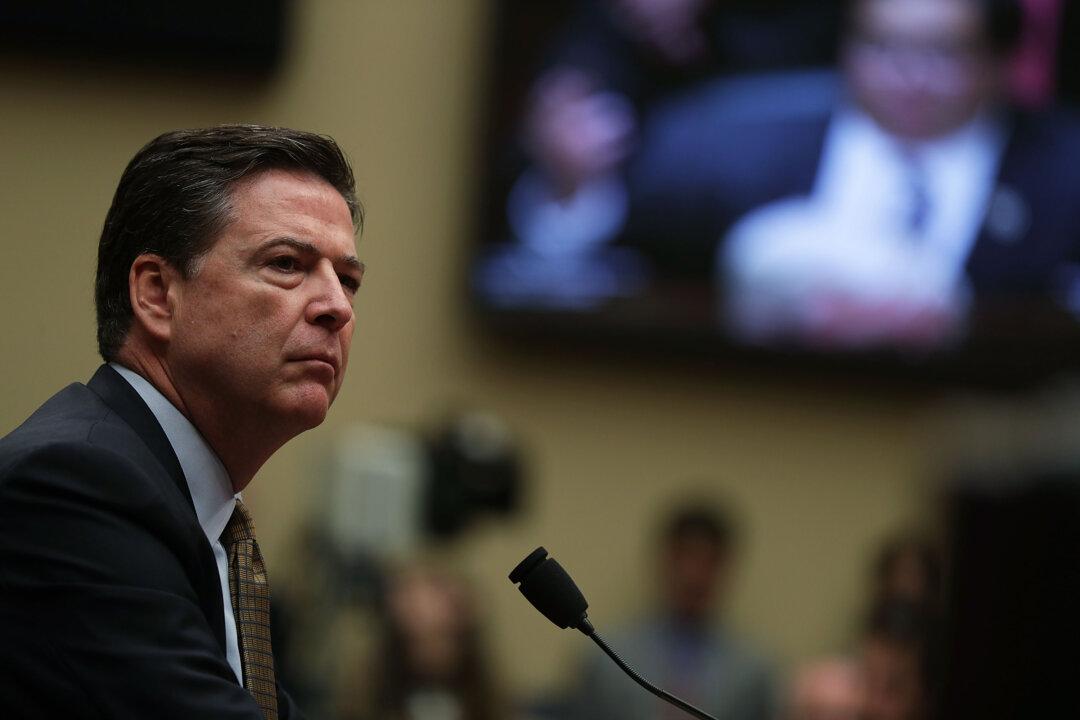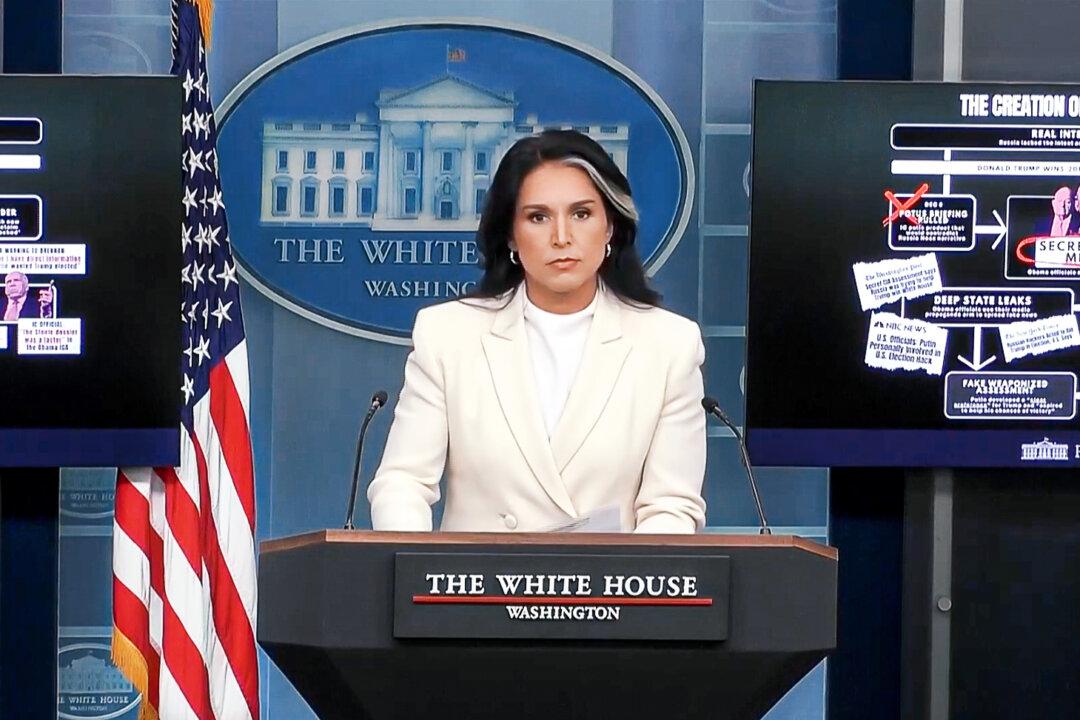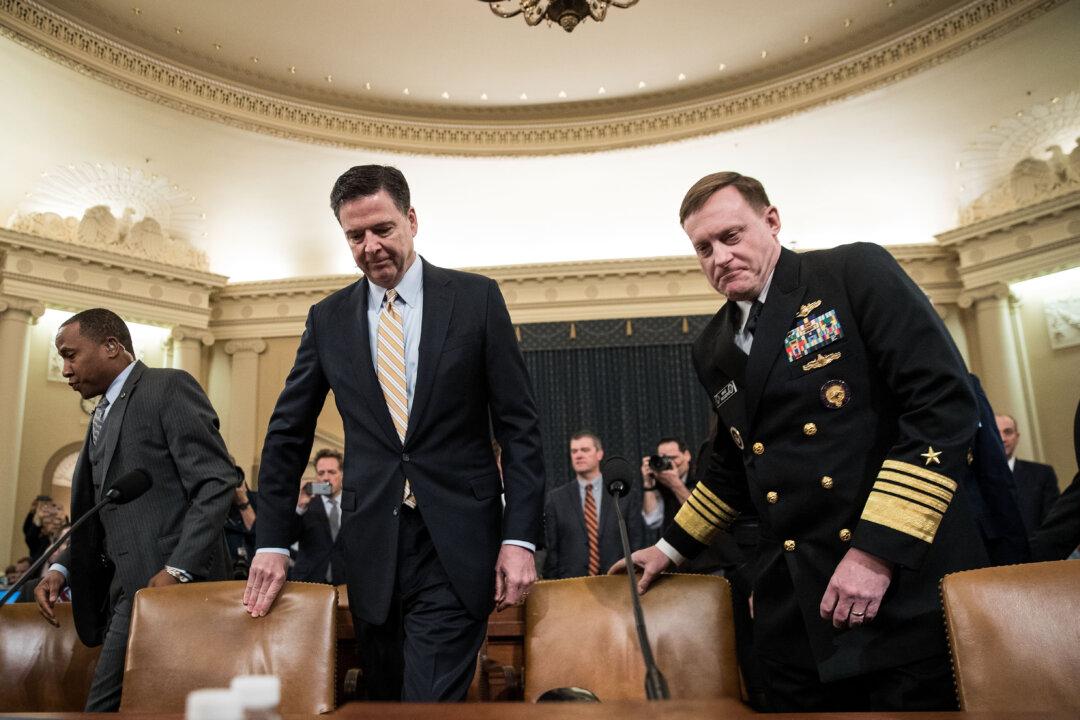The FBI failed to disclose crucial details about the political origins and dubious credibility of the claims included in an annex to the seminal Intelligence Community Assessment on Russia, according to a newly declassified record.
Director of National Intelligence John Ratcliffe on June 11 declassified Annex A of the January 6, 2017, Intelligence Community Assessment titled “Assessing Russian Activities and Intentions in Recent U.S. Elections.” Then FBI-Director James Comey personally briefed the “salacious” portion of the annex to President-elect Donald Trump on January 7, 2017. The annex consists of claims drawn from the infamous Steele dossier, as well as an assessment of the source of the dossier, Christopher Steele.





